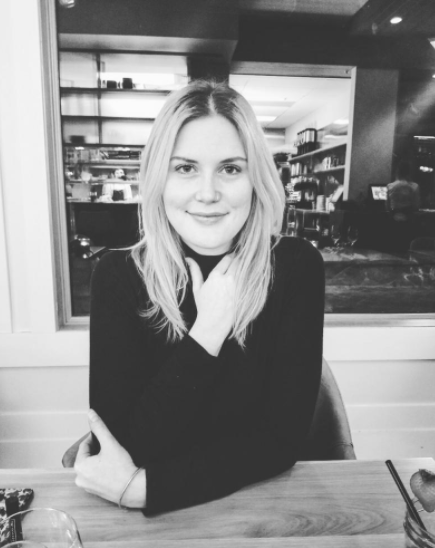Many Extraordinary Journeys southern Africa safari itineraries feature mokoro rides as a unique, water-based add-on activity that offer game viewing from a fresh perspective. Based on the questions we receive from travelers, it’s clear that most folks have no idea what a mokoro is. Though the word is foreign, the concept will not be unfamiliar to those who have experienced canoeing or kayaking, or even a gondola ride. Here’s what a mokoro safari entails and why it’s pure magic.
What is a mokoro?
At a most basic level, a mokoro is a dugout canoe propelled by a solo operator (a “poler”) who stands at the back and navigates with a ngashe (pole). A mokoro follows the basic shape of a canoe and is traditionally carved out of a single tree trunk, though operators are increasingly turning to fiberglass in order to preserve large, indigenous hardwood trees. Boats measure 20 feet in length, accommodating one or two passengers seated tandem on molded plastic seats. Mokoro rides are a signature experience at properties in Botswana’s Okavango Delta—particularly those set on permanent waterways. Excursions last an hour or so, often taking place in the morning or at sunset, before or after a game drive.
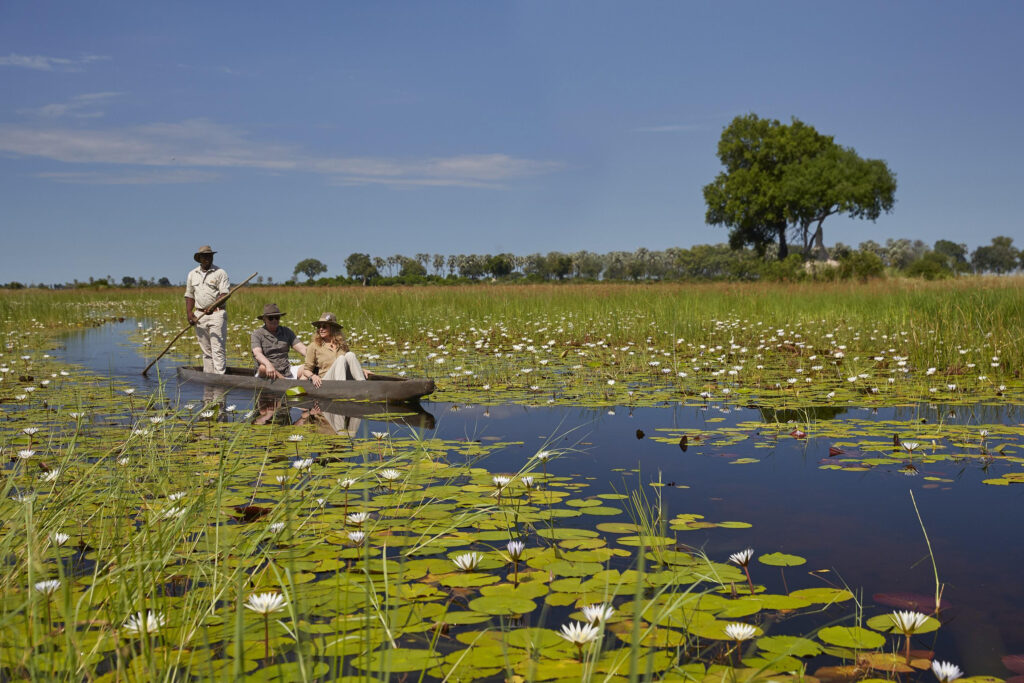
The history of mokoros
Each year, the Okavango Delta swells with water that originally fell as rain across Angola’s highlands. Meandering some 600 miles south to Botswana and arriving as flood water, it transforms the Delta into a labyrinth teeming with wildlife before draining into the sands of the Kalahari. In a place where rivers outnumber roads, mokoros have been used for generations to fish, harvest reeds and traverse the watershed.
Historically, mokoros were operated by two people—one steering seated at the stern and a poler, standing at the front, propelling it with a ngashe. Having navigated the channels on a regular basis and for most of their lives, modern boatmen have perfected the lifelong skill and are able to gracefully maneuver the mokoro at a considerable speed.
Traditionally, mokoros were built by talented craftsmen and made from moisture-resistant hardwoods like jackalberry, sausage and mangosteen. In order to achieve the right shape and buoyancy, straight, mature trees are favored. To hollow out the tree trunk, a controlled burn is performed, and historically a curved-blade tool called an adze was used to chop away at the burnt wood. (Hatchets are preferred now.) Once hollowed and proven buoyant, the trunk is then crafted into an elongated and streamlined shape with distinct points at the bow and stern.
Today, you’re just as likely to encounter mokoros made of fiberglass (some with glass bottoms for underwater viewing) which eliminates the need to extract volumes of trees from the sensitive Okavango ecosystem. What’s more, unlike their fiberglass counterparts, the lifespan of a wood canoe is just three to five years, at which point rot renders them unusable.

What makes mokoro safaris special?
Few safari experiences are enjoyed in total silence. Absent the hum of a motor or the splash of a paddle, a mokoro glides atop glassy waters, splitting reeds and parting lily pads. Traveling just above the waterline affords a whole new vantage point. Through a glass-bottom mokoro, glimpse African pike or yellow-and-green scaled nembwe darting through aquatic flora. At the waterline, zoom in to appreciate the micro critters and avian life you otherwise miss on noisy, four-wheeled safaris. In the heart of the Delta, a secluded network of waterways and islands shelter wildlife, offering encounters that aren’t otherwise accessible. Spot grazing herds of rare, swamp-dwelling sitatunga and red lechwe antelope, or observe elephants swimming shoulder-deep through a tangle of reeds teeming with tiny frogs of all colors.
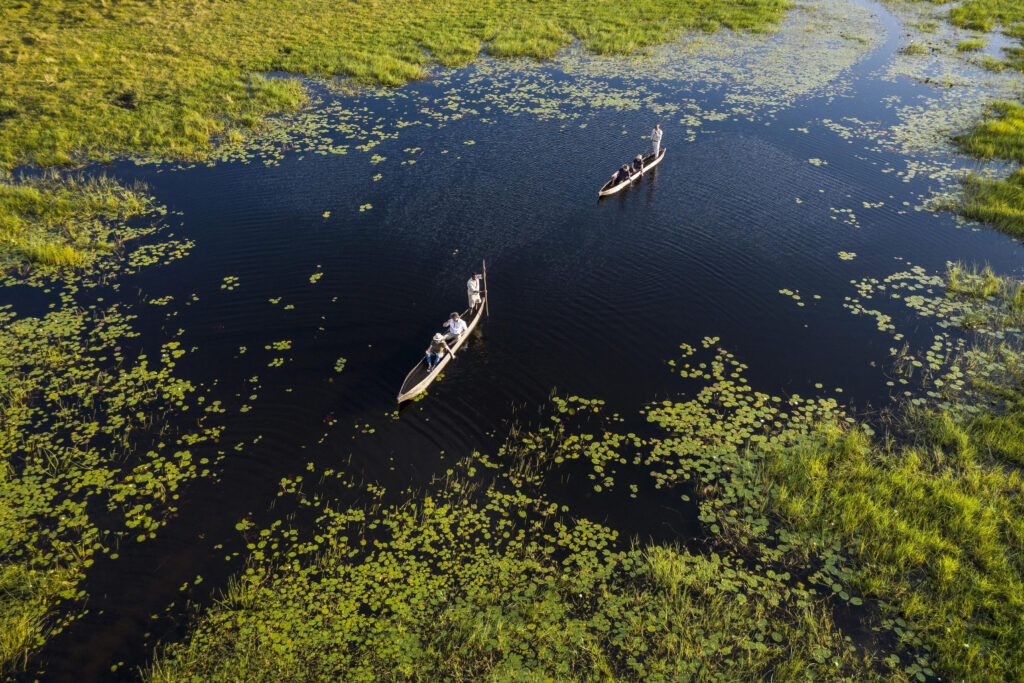
Wildlife you’ll see on a mokoro safari
The Okavango Delta attracts a wide diversity of wildlife and you’re likely to encounter leopard, lion, buffalo, hyena, wild dog, hippo, zebra, wildebeest, giraffe, civet, serval, tsessebe, roan, sable, kudu, impala, sitatunga, semi-aquatic red lechwe, and many more. You’re assured to view elephants, too. Botswana boasts 130,000 wild ones (at last count), making this population the world’s largest.
With distinct wet and dry seasons, and varied topographies, Botswana is a siren’s call for birdlife and the enthusiasts who track them. At any given time, some 450 to 600 species of birds, both resident and migratory, are present in the Okavango Delta. Birders might spy a yellow billed kite, slaty egret, lilac breasted roller, pied kingfisher, pygmy goose, jacana, little bee eater, lesser gallinule, greater painted snipe or a rare Pel’s fishing owl.

Lodges and camps offering mokoro safaris
Whether or not a property offers mokoro rides (especially in the Okavango Delta) depends on two things: (a) the time of year and its corresponding water level; and (b) proximity to a permanent waterway.
If a camp or lodge is located in an area where water levels are too high, or where hippos are prevalent, the property will prioritize guest safety over offering mokoro safaris.
Given these limitations, if a mokoro ride is high on your wish list here are a few properties which are able to offer them most of the year.

Mokoro safari FAQs
Are mokoro rides safe?
Sitting inches above the waterline in a slow-moving boat passing through waters frequented by territorial hippos and crocodiles, it’s perfectly natural to wonder if a mokoro ride is safe.
When venturing out with an expert guide, mokoro safaris are generally considered to be safe. Guides take a great deal of care to avoid the deeper channels that hippos and crocodiles prefer, in addition to scanning for visual clues and listening for hippos’ raucous bellows, snorts and honks. (In fact, travelers who specifically want to glimpse these two species should skip a mokoro ride altogether and opt for a motorboat excursion into the Okavango’s deeper rivers and lagoons.)
Also, while a mokoro ride is something novel you’re enjoying as a tourist for (perhaps) the first time, it’s reassuring to be reminded that they’re an entire way of life for the people who call the Delta home.
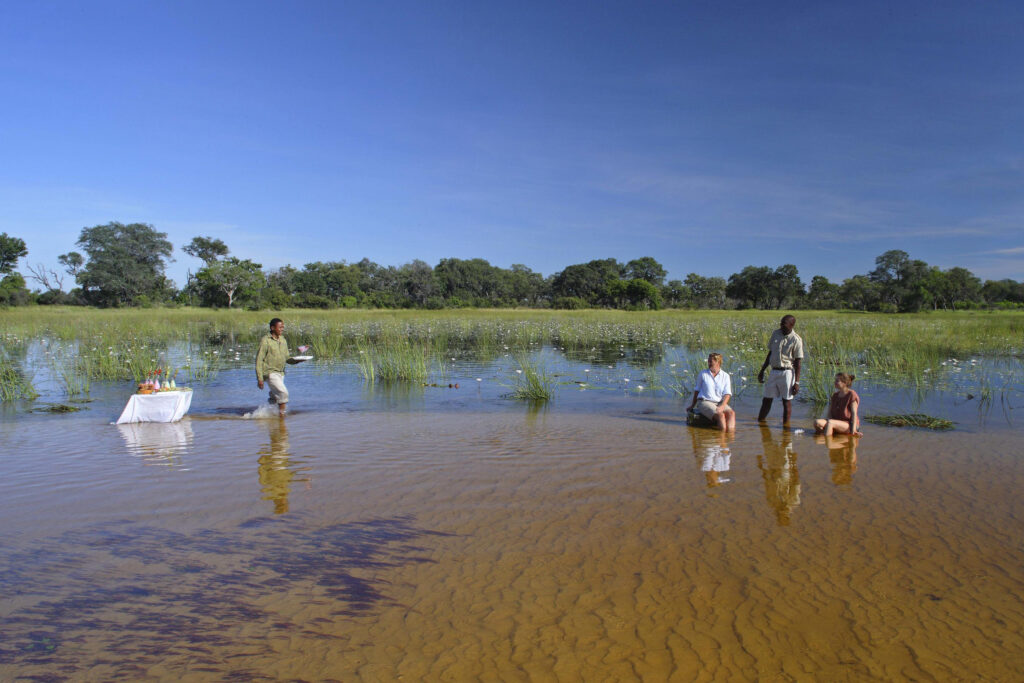
What should I bring on a mokoro safari?
Mokoro boats are small and excursions typically last an hour, so you’ll only want to bring the essentials. Bear in mind that the experience will be fairly exposed to the south African sun and reflected back by the glassy water’s surface, so adequate sun protection is important.
- A small bag/pack
- Brimmed hat
- Sunglasses
- Sunscreen
- Binoculars
- Camera
- Sturdy, rubber sole footwear that can get wet
- Seasonally, you might want to wear long sleeves/pants and bug repellent
- Cash for tipping
Who are mokoro safaris good for?
Birdwatchers and photographers love mokoro safaris due to the boat’s ability to silently approach wildlife.
Guests will require some balance to enter and exit the boat which may be a consideration for those with mobility limitations or knee pain. Young passengers should be old enough to sit without fidgeting, as not to compromise the poler’s ability to navigate.
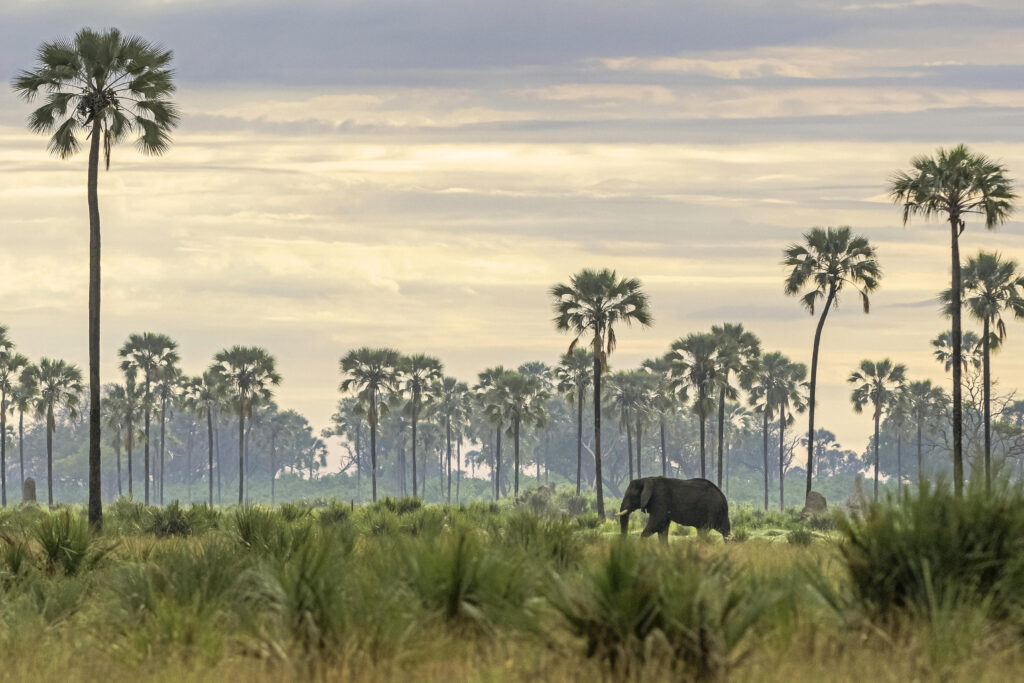
What’s the best time to visit the Okavango Delta?
The Delta’s changing landscape of islands, channels and floodplains beckons to visitors year-round. Whether activities are more land-based or water-focused depends on the season and the camp’s location.
The best time to enjoy a mokoro safari is between April and October when flood water levels reach their peak. This coincides with Botswana’s dry season (May, June, July and August observe little-to-no rainfall) when game viewing is excellent—but will come with high season pricing. Travelers visiting toward the end of dry season will experience heat in September and October when the average temperature hovers around 93°F/34°C.
How much should I tip my mokoro guide?
Our safari specialists recommend tipping your poler $5 for each passenger.
Plan your mokoro safari with us
Ready to start planning your own incredible adventure? We make the process stress-free and enjoyable.
